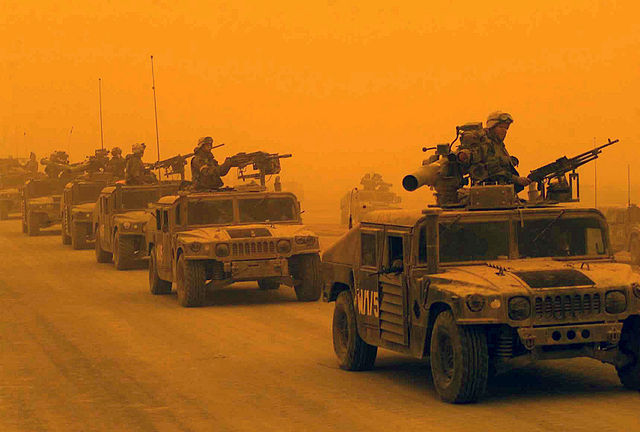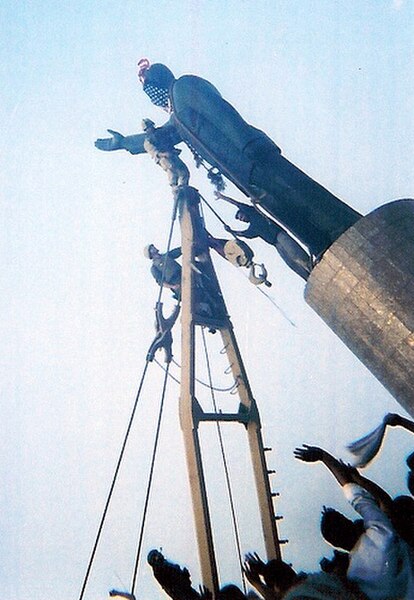Iraqi no-fly zones conflict
The Iraqi no-fly zones conflict was a low-level conflict in the two no-fly zones (NFZs) in Iraq that were proclaimed by the United States, United Kingdom, and France after the Gulf War of 1991. The United States stated that the NFZs were intended to protect the ethnic Kurdish minority in northern Iraq and Shiite Muslims in the south. Iraqi aircraft were forbidden from flying inside the zones. The policy was enforced by the United States and the United Kingdom until 2003, when it was rendered obsolete by the 2003 invasion of Iraq. French aircraft patrols also participated until France withdrew in 1996.
Still photograph from a videotape of an Iraqi surface-to-air missile, believed to be an SA-3, launched at a Coalition aircraft in July 2001.
The United States-led invasion of the Republic of Iraq was the first stage of the Iraq War. The invasion began on 19 March 2003 and lasted just over one month, including 26 days of major combat operations, in which a combined force of troops from the United States, the United Kingdom, Australia and Poland invaded Iraq. Twenty-two days after the first day of the invasion, the capital city of Baghdad was captured by coalition forces on 9 April after the six-day-long Battle of Baghdad. This early stage of the war formally ended on 1 May when U.S. President George W. Bush declared the "end of major combat operations" in his Mission Accomplished speech, after which the Coalition Provisional Authority (CPA) was established as the first of several successive transitional governments leading up to the first Iraqi parliamentary election in January 2005. U.S. military forces later remained in Iraq until the withdrawal in 2011.
Image: U.S. Marines with Iraqi PO Ws March 21, 2003
Image: Iraqi Sandstorm
Image: US soldiers watch Iraqi paramilitary headquarter's burn Samawah, Iraq April 2003
Image: Flag on Saddam Firdos Square Statues face 2003 04 09





